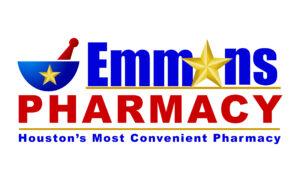In the United States, access to healthcare is a complex and often costly endeavor. While the country boasts some of the world’s most advanced medical facilities and groundbreaking research, navigating the healthcare system, especially regarding insurance and medication costs, can be daunting. This article aims to shed light on the intricacies of health insurance and medication expenses in the USA and provide guidance on how individuals can better manage these aspects of their healthcare.
Understanding Health Insurance
Health insurance is a crucial part of the American healthcare system. It serves as a financial safety net for individuals and families by helping cover the costs of medical care. However, the system itself can be bewildering due to its variety of plans, providers, and terminology.
- Types of Health Insurance:
- Employer-Sponsored Insurance (ESI): Many Americans receive health insurance through their employers. Employers often cover a portion of the premium, making it a cost-effective option for many.
- Individual and Family Plans: Those who don’t have access to ESI can purchase individual or family plans on the healthcare marketplace.
- Government Programs: Government programs like Medicare (for seniors) and Medicaid (for low-income individuals and families) provide health coverage to eligible populations.
- Premiums, Deductibles, and Copayments:
- Premiums are monthly payments to maintain your insurance coverage.
- Deductibles are the amount you must pay out of pocket before your insurance kicks in.
- Copayments are fixed fees for specific medical services or prescriptions.
- In-Network vs. Out-of-Network Care:
Staying in-network can significantly reduce your out-of-pocket costs because insurers have negotiated rates with specific healthcare providers.
Managing Medication Costs
Prescription medications can be a substantial part of healthcare expenses, and their prices can vary widely depending on factors like insurance coverage and the type of drug. Here are some strategies to navigate medication costs:
- Check Your Insurance Formulary: Insurance plans often have a list of preferred medications, known as a formulary. Using drugs on this list can save you money.
- Utilize Generics: Generic drugs are usually more affordable than brand-name equivalents and are equally effective.
- Ask About Patient Assistance Programs: Some pharmaceutical companies offer assistance programs for individuals who cannot afford their medications.
- Consider Mail-Order Pharmacies: Mail-order pharmacies often offer discounts on prescription drugs for long-term medications.
- Shop Around: Different pharmacies may have varying prices for the same medication. Don’t hesitate to compare prices before filling your prescription.
- Discuss Alternatives with Your Doctor: If a particular medication is costly, consult your doctor about alternative treatments or generic options.
Conclusion
Navigating insurance and medication costs in the USA can be challenging, but individuals can better manage their healthcare expenses with the right knowledge and strategies. Understanding your insurance plan, utilizing cost-saving techniques, and exploring assistance programs are all valuable steps in ensuring that healthcare remains accessible and affordable in this complex healthcare landscape. You can protect your health without breaking the bank by staying informed and proactive.



